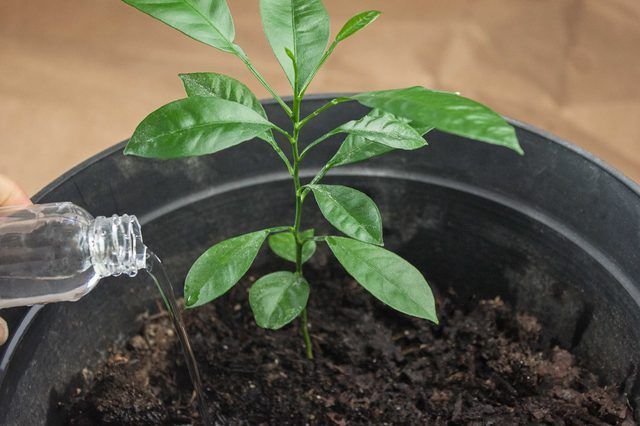Bulbs
Flower Basics
Flower Beds & Specialty Gardens
Flower Garden
Garden Furniture
Garden Gnomes
Garden Seeds
Garden Sheds
Garden Statues
Garden Tools & Supplies
Gardening Basics
Green & Organic
Groundcovers & Vines
Growing Annuals
Growing Basil
Growing Beans
Growing Berries
Growing Blueberries
Growing Cactus
Growing Corn
Growing Cotton
Growing Edibles
Growing Flowers
Growing Garlic
Growing Grapes
Growing Grass
Growing Herbs
Growing Jasmine
Growing Mint
Growing Mushrooms
Orchids
Growing Peanuts
Growing Perennials
Growing Plants
Growing Rosemary
Growing Roses
Growing Strawberries
Growing Sunflowers
Growing Thyme
Growing Tomatoes
Growing Tulips
Growing Vegetables
Herb Basics
Herb Garden
Indoor Growing
Landscaping Basics
Landscaping Patios
Landscaping Plants
Landscaping Shrubs
Landscaping Trees
Landscaping Walks & Pathways
Lawn Basics
Lawn Maintenance
Lawn Mowers
Lawn Ornaments
Lawn Planting
Lawn Tools
Outdoor Growing
Overall Landscape Planning
Pests, Weeds & Problems
Plant Basics
Rock Garden
Rose Garden
Shrubs
Soil
Specialty Gardens
Trees
Vegetable Garden
Yard Maintenance
How to Grow an Orange Tree From Seed
How to Grow an Orange Tree From Seed. A ripe orange produces an abundance of oblong, creamy white seeds that can be used to grow new orange trees (Citrus sinensis). The seeds sprout readily without pretreatment and will quickly produce lush, evergreen foliage. The trees can grow outdoors year-round in U.S. Department of Agriculture plant hardiness...
A ripe orange produces an abundance of oblong, creamy white seeds that can be used to grow new orange trees (Citrus sinensis). The seeds sprout readily without pretreatment and will quickly produce lush, evergreen foliage. The trees can grow outdoors year-round in U.S. Department of Agriculture plant hardiness zones 9 through 11. Seed-grown orange trees mature slowly, and most take seven to eight years to bear fruit.
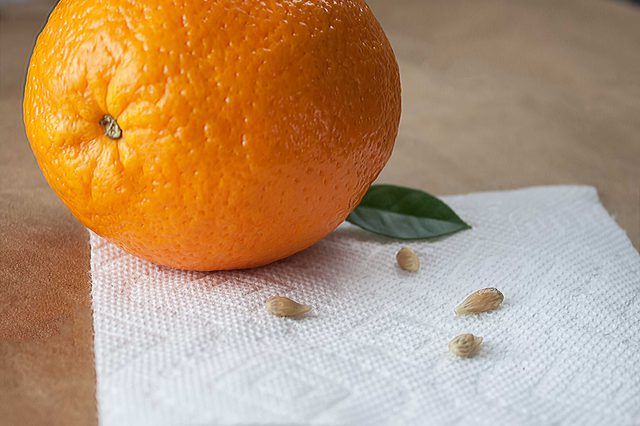
Orange seeds begin losing viability as soon as you remove them from the fruit, so make sure you're prepared before you cut open the orange. Take seeds from a fully ripe fruit with a solid orange color and no hint of green. Collect seeds from healthy, unblemished fruits with no signs of rot or mold. Use at least four orange seeds to increase the odds of successful germination, and rinse them well in cool, clean water to remove any residual sugars. Spread the orange seeds on a sheet of paper towel to dry off while you prepare the pots.
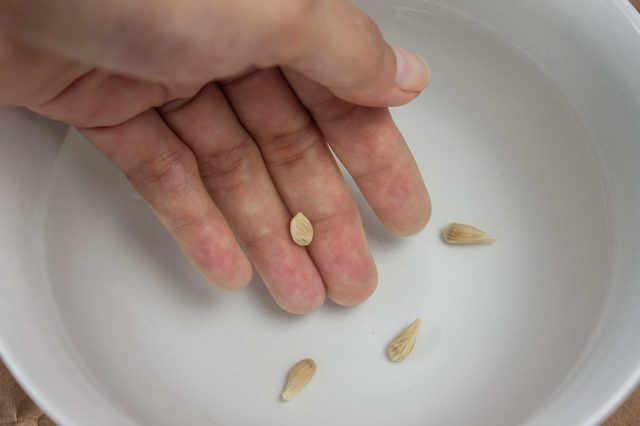
The correct moisture balance and sowing depth are vital to successfully germinating orange seeds. Use a clean, 3- to 4-inch pot with at least two drainage holes at the base and a sterile potting mix made up of equal parts milled peat and small-grain perlite. Fill the pot to within 1/2 inch of the top with the soil mixture and lay two seeds on the surface near the center, spacing them roughly 1/2 inch apart. Cover the seeds with a 1/4- to 1/2-inch layer of the potting medium. Mist the medium with water to settle it.
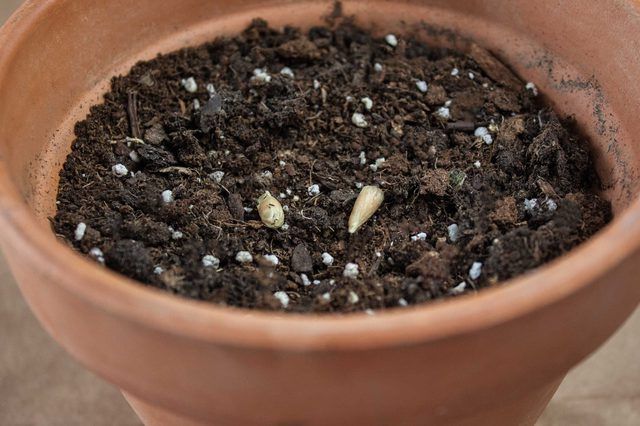
Orange seeds need temperatures above 70 degrees Fahrenheit to successfully germinate. Arrange the pots on a germination mat or in a naturally warm spot, such as on top of a refrigerator or near a hot water heater. Drape a sheet of plastic wrap over the pot to hold in heat, but keep the edges loose to allow excess moisture to escape. Keep the soil mixture evenly moist, but let the surface dry out slightly before watering again. Most healthy orange seeds germinate in seven to 10 days when they're kept warm, but some may take much longer. Once the sprouts emerge, remove the plastic wrap and move the pots near a west- or south-facing window with at least four hours of sun each day.
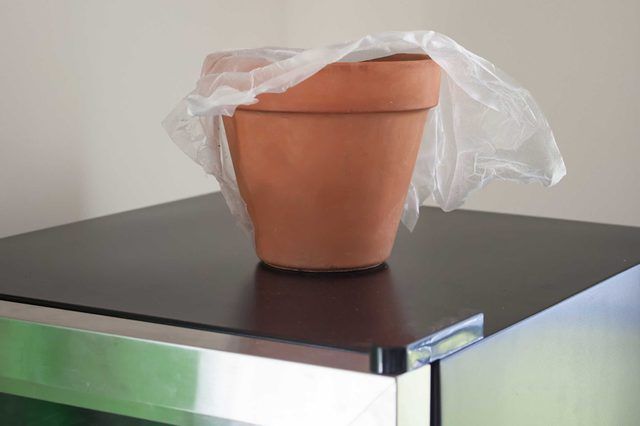
Orange trees produce two different types of seedling sprouts: genetic sprouts and vegetative sprouts. The vegetative sprouts share the same traits as the mother tree, so they will eventually produce quality fruit. Genetic sprouts possess genetic variations due to cross-pollination, so they may not produce the same quality of fruit and should be removed. Each orange seed can produce three sprouts: one genetic and two vegetative. Vegetative sprouts are vigorous and taller than the weaker genetic sprout. Snip off the genetic sprout at the base using small scissors and discard it so the vegetative sprouts can grow without competition for nutrients.
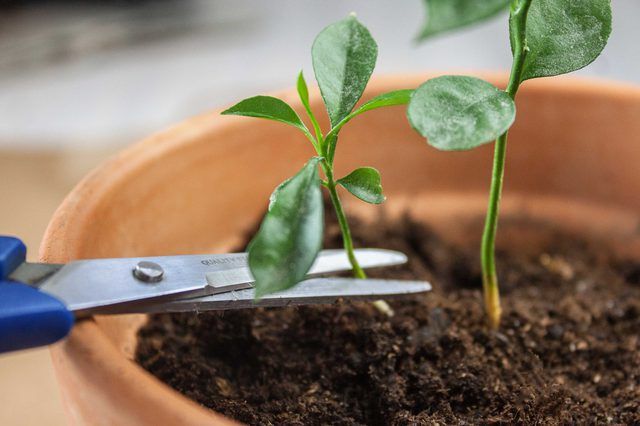
The sterile medium used for sprouting orange seeds lacks the necessary nutrients for healthy seedling development, so the seedlings must be transplanted into new pots once they produce several sets of leaves. Move the seedlings into 4- to 6-inch pots filled with citrus formula potting soil. Again, use pots with drainage holes. Keep the seedlings in a bright, sunny spot with southern exposure and water them when the soil dries out on the surface, adding water until it trickles from the bottom of the pot. Fertilize the orange seedlings every two weeks with 1/2 teaspoon of 10-10-10 fertilizer diluted in 1 gallon of water. Stop fertilizing in autumn and winter. Orange trees respond well to being grown in containers, but they will perform best if planted outdoors within their preferred climate range.
